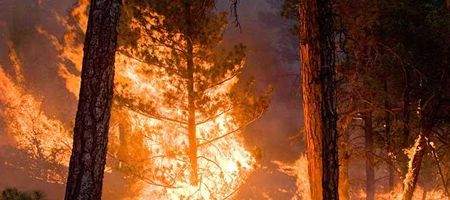Scientists are warning that, because of climate change, the number of wildfires in the US is set to increase.

Their analysis used climate projections, prepared for the Fifth Assessment Report of the United Nations Intergovernmental Panel on Climate Change, to examine how dryness, and therefore fire activity, is expected to change.
The results suggest that ‘fire seasons’ will become both longer and stronger across all regions of the US over the next 30 to 50 years. Specifically, high fire years like this one would likely occur two to four times per decade by the middle of the century, rather than once per decade, as at present.
In August this year, more than 6.17 million acres burned across the US – short of the record 7.90 million acres that burned in 2011, but one of the largest areas since records began in 1997.
And as the land area burned each year has increased, so too have the emissions. Carbon dioxide emissions from wildfires in the western US have more than doubled since the 1980s.
The team used satellite data to quantify how much carbon has been released from fires in the US West.
“Fire is an inherently global phenomenon, and the only practical way to track large-scale patterns and changes in fire activity is with satellites,” says Louis Giglio of the University of Maryland.
They found carbon emissions from fires have grown from an average of 8.8 million tons per year from 1984 to 1995 to an average of 22 million tons per year from 1996 to 2008.
“With the climate change forecast for the region, this trend likely will continue as the western US gets warmer and drier on average,” says Chris Williams of Clark University.
“If this comes to pass, we can anticipate increased fire severity and an even greater area burned annually, causing a further rise in the release of carbon dioxide.”






